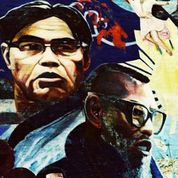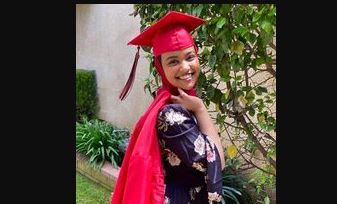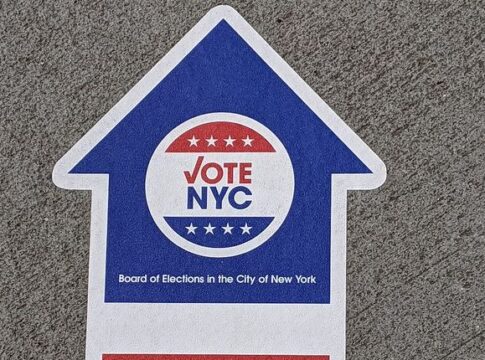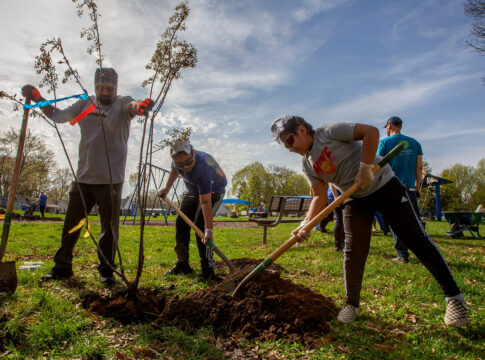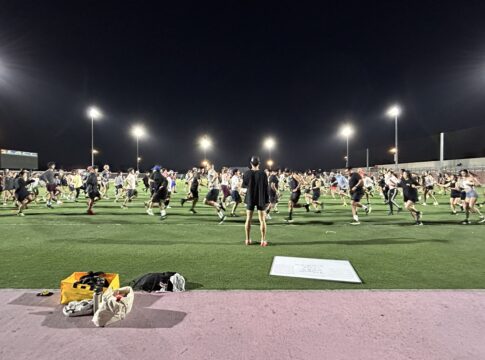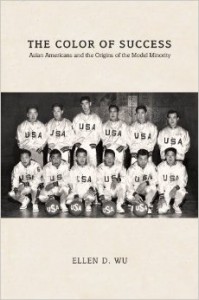Guest Blogger
(note from the editor: This is the second half of a 2-part interview with Dr. Ellen D. Wu, assistant professor of history at Indiana University, Bloomington. She is the author of the upcoming book, The Color of Success: Asian Americans and the Origins of the Model Minority, which gives a historical examination of the ‘model minority’ in 20th century America. This second part of the interview discusses the implications of Model Minority on Asian Americans and the future evolution of this construct.
LATEST STORIES
Q: In your book you trace the history of the treatment and perceptions of Asian Americans from ‘ineradicable aliens to assimilating Others’ (i.e., people capable of acting like white Americans while remaining racially distinct) to model minority in the 1960s with the Asian who ‘was at once a model citizen and definitely not-black.’ Where do you think we are now in this evolution of Asian Americans and their place in American society?
I would say that APAs in the 21st century certainly enjoy a level of freedom that our predecessors in the period of Asian Exclusion (mid-19th to World War II) could never have dreamed. In very concrete, material ways, our lives our better—we aren’t exposed to the levels of daily, vicious oppression that they faced. On the level of cultural representation and discourse (to use an academic term), we’ve made strides that few of us probably anticipated 15 or 20 years ago. Harold and Kumar! The Mindy Project! Linsanity! It’s not perfect, but it’s still pretty cool.
Yet historians (including myself) are cautious about reading history as a narrative of uninterrupted progress. We ought to consider the evolution of APAs and their place in America society as not uni-directional. Things get better and worse at the same time. APAs are increasingly included in certain realms but excluded in other ways. All of the anti-Arab/Muslim/South Asian ugliness in the aftermath of 9/11 is a painful reminder of that. And something that I’ve learned about from you, Alice, is the continued marginalization of APAs and other people of color in understandings of disability in American life.
Q: As an Asian-American who grew up in Indianapolis in the 1970s and 1980s, did you have many experiences where you were confronted with the model minority? Has it impacted you personally in any way?
Yes, of course. While Indy in the 1970s-80s did not have many APAs, many who lived in the city and surrounding suburbs were highly-educated professionals—the very types of immigrant workers the United States hoped to attract with its landmark 1965 Immigration Act. My own parents were professionals—my dad was a research pharmacist, and my mom was a nurse. A number of Chinese American friends had parents who worked for Eli Lilly and other science/tech companies. The social/class position and education background of these families likely reinforced the pre-existing notion that APAs were “model minorities.” I suspect that teachers in schools often racially profiled APA students in this way.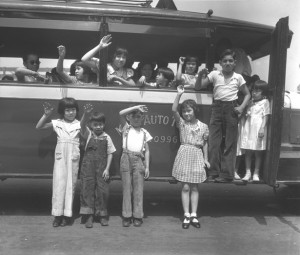
Q: There are many people, including Asian Americans, who think that we live in a post-racial society where the model minority doesn’t matter anymore. Why do you think it’s important, for young people in particular, to look back at the history of Asian Americans and the emergence of the model minority?
I think it’s important for young APAs to know our collectively history for a number of reasons. First, we have a duty to acknowledge the struggles of our predecessors who labored to make our society a more open and inclusive one—to the point where some people can even claim (though untrue) that we are “post-racial.” Second, understanding that the model minority was a fairly recent creation drives home the point that racial ideas, racial categories, and racial assumptions are invented by people, not facts of nature. That gives me hope that the model minority and all kinds of other insidious stereotypes can be “unmade” as well as “made.” History allows us to see change over time and expect change in the future. Asian Pacific American history in particular underscores that the actions, decisions, and rhetorical claims of APAs have mattered in significant ways.
Q: Many Asian-American activists talk about the harm of the model minority on Asian Americans but I think it’s more complex than that. What are your thoughts on the benefits/damaging effects of the model minority on Asian Americans?
 Alice, I agree with you. On the one hand, the model minority myth is undoubtedly a harmful assumption. It masks the social problems faced by many APAs; it also robs individuals of their humanity by reducing complex persons to one-dimensional stereotypes. At the same time, APAs must acknowledge that the “model minority” is a form of social capital—albeit a perverse one. APAs do not get criminalized to the same extent as African Americans, Latinos, and indigenous peoples, for instance. Ironically, APAs are not generally demeaned as “illegals” in today’s immigration debate—even though there are many who find their way to the United States as undocumented persons. Pressing issues faced by APAs get swept under the rug by the media and policymakers. And sadly, there are plenty of APA’s who embrace the model minority label and parrot the arguments of those who suggest that the minority groups who are “not model” are to blame for problems that are clearly the consequences of a history of structural racism, exploitation, and violence against people of color in the United States.
Alice, I agree with you. On the one hand, the model minority myth is undoubtedly a harmful assumption. It masks the social problems faced by many APAs; it also robs individuals of their humanity by reducing complex persons to one-dimensional stereotypes. At the same time, APAs must acknowledge that the “model minority” is a form of social capital—albeit a perverse one. APAs do not get criminalized to the same extent as African Americans, Latinos, and indigenous peoples, for instance. Ironically, APAs are not generally demeaned as “illegals” in today’s immigration debate—even though there are many who find their way to the United States as undocumented persons. Pressing issues faced by APAs get swept under the rug by the media and policymakers. And sadly, there are plenty of APA’s who embrace the model minority label and parrot the arguments of those who suggest that the minority groups who are “not model” are to blame for problems that are clearly the consequences of a history of structural racism, exploitation, and violence against people of color in the United States.
Q: In the Introduction of your book you state that the model minority is an excellent example of how racial categories change over time–with the changing demographics and increasing numbers of people identifying as ‘hapa’ or multi-racial, how do you see the term Asian American changing in the future?
You know, “Asian American” (like “model minority”) is a fairly recent invention—no more than 50 or 60 years old, depending on who you ask—and even today it still feels unsettled. Are we “Asian American”? “Asian Pacific American”? “Asian American Pacific Islander”? There’s no agreement, but that’s OK, since the disagreement acknowledges our differences. It may well be that another new phrase might be coined to recognize the growing numbers of hapa/multi-racial in our community.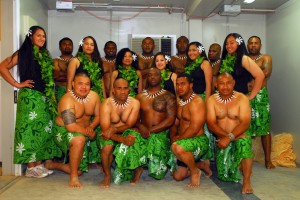
Q: What do you see in the future the model minority as a concept as more Asian Americans are elected into public office, win spelling bees, become Miss America, and join the NBA?
I think it bodes well for our collective future that APAs are increasingly visible in unexpected places. The more diversity of voices and stories and experiences that APAs can put out there, the more we can make others aware that we cannot be reduced to the model minority myth. Not to sound trite, but we are indeed changing the conversation.
You can read part 1 of this interview, the evolution of the model minority here.
Dr. Ellen D. Wu is assistant professor of history at Indiana University, Bloomington specializing in issues of race, immigration, citizenship, and nation through the lens of Asian American history. Follow Ellen on twitter: @ellendwu
About the author: Alice Wong is Staff Research Associate at the Community Living Policy Center at the University of California, San Francisco and a Council Member of the National Council on Disability. Follow Alice on twitter: @SFdirewolf


